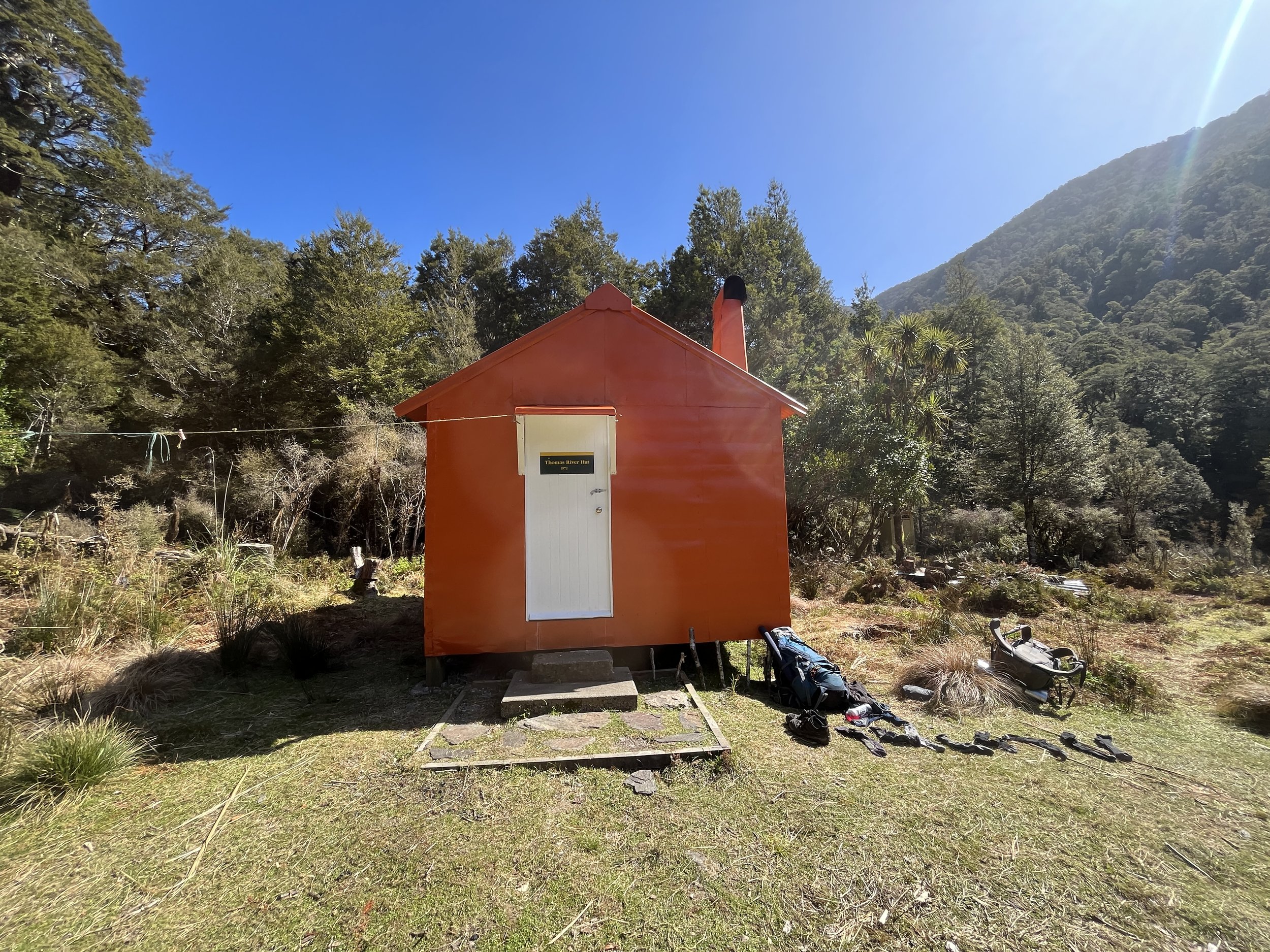Remote Huts
This conversation did not directly include the SDGs but we feel the following are most closely aligned with Andrew’s story:
SDG 15: Life on Land
Conserving and sustainably using land ecosystems with the primary goal of preservation
SDG 13: Climate Action
Taking urgent action to combat climate change and its impacts.
SDG 16: Peace, Justice, & Strong Institutions
Promotion of peaceful and inclusive societies
The West Coast is a region of New Zealand’s South Island that is sparsely populated with a rough climate and rugged terrain. In the late 1800s deer were first introduced to New Zealand from England and Scotland. With no predators on the island, their populations exploded. This new invasive species decimated native bush and threatened species of endemic bird populations. To control this invasive species, the New Zealand government began employing deer cullers to roam the hills and manage their population through hunting. Through the program, networks of tracks were cut, and huts were erected to provide deer cullers with shelter from the harsh West Coast storms. The huts were simple shelters with a few bunk beds and a fireplace. Such an environment was the perfect breeding ground for keen outdoorsmen.
Andrew Buglass grew up on the West Coast and spent his teenage years cruising around these tracks and taking shelter in these huts, many of them quite difficult to access. Such experiences were magical and formative for the development of a young man. Andrew eventually left the West Coast to attend university and travel overseas, but he never lost his connection with the mountains and the huts he called home within them. In the late 90’s the newly formed Department of Conservation (DOC) was handed over management of these deer culler huts and all of the other huts in New Zealand. DOC’s priorities were heavily focused on maintaining the high-use tourist infrastructure.
For example, The Routeburn Falls hut provides shelter for the over 10,000 visitors each year that walk the popular Routeburn Track. This hut has 48 bunks, lighting, and flushing toilets (a true luxury in the backcountry) to accommodate all of its visitors. This is a stark difference to the old deer cullers' huts, some of which only saw a visitor every couple of years. With DOC’s focus on tourist infrastructure, these remote huts received less attention. Tracks became overgrown and the huts began to fall apart without constant upkeep and maintenance. With a new accounting system that charged asset taxes on all government structures, DOC was keen to let these backcountry huts go. The huts that were so formidable in Andrew’s development were falling apart and slowly being reclaimed by the bush.
Andrew realized if they were to be saved, he would have to set the gears into motion himself. Andrew hoped he could create enough awareness to save just one of these huts. He created a small website called RemoteHuts.co.nz to profile each hut and which included photos and information about how to access it. In every hut, there is a notebook called an intentions book that every hut user records their information in order to aid in any possible rescue Andrew began to see names on the website that he recognized from these intentions books from the remote huts. He created an online group to connect those with similar interests. As this group grew, it turned into a working collective and took on the name, ‘Permolot’, named after the material they used to mark tracks with. Permolot capitalized on the decades of experience its members had to quickly organize work trips to perform maintenance on the huts. The group relied on an empowerment model that gave these experienced trampers (called backpackers elsewhere) the ability to do work on their own, rather than relying on a government agency to do it for them.
When Andrew started RemoteHuts.co.nz, he hoped to save a few huts. With all the work that Permolat has achieved, they've done much more than that. Dozens of huts have been restored to working condition, tracks have been cut and thousands of people inspired. With the huts in good condition, they've shifted their focus to empowering trampers to work on track themselves. Many hut users complain about the condition of the tracks, but fail to realize they can fix it themselves. Actions as simple as carrying in some tools for a bit of maintenance, or dedicating a weekend every few months for track work would greatly improve access to these huts. Permolat has achieved a sort of a “mythical status”, but in reality, its achievement relies solely on the power of the individual people. For Andrew, the entire process has been a rewarding one. He’s spent his entire life taking advantage of any time he could to get out into the hills. His work with Permolat has been duly rewarding, not only for the impact he's making, but he also gets to do the things he loves, in places he loves to be in.
The goal of the ESP is to showcase stories of entrepreneurs, innovators, and changemakers who are making progress on the United Nations Sustainable Development Goals. Andrew's work exemplifies this, weaving together multiple goals such as “Climate Action”, “Life Below Water”, “Life on Land”, “Good Health and Wellbeing”, and “Partnership for the Goals”. Protecting wilderness benefits both the life within it and the climate as a whole. Ensuring access to wild spaces allows future generations to form intimate connections with the natural world, inspiring them to continue the fight to protect it. Preserving these backcountry huts not only preserves the environments they’re in and protects the history of them, but it also creates opportunities for others to have their own relationships with the wilderness, and continue to fight for our planet.
Blog By: Joe Fitzgerald
More Information










